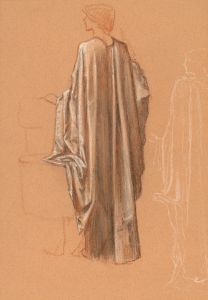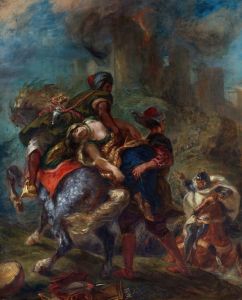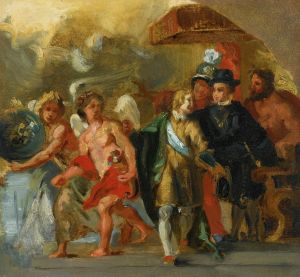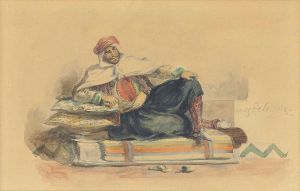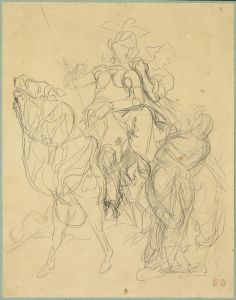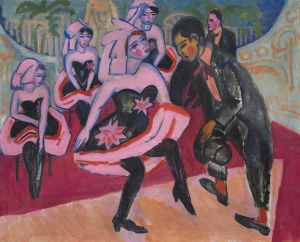
Le Combat
A hand-painted replica of Eugène Delacroix’s masterpiece Le Combat, meticulously crafted by professional artists to capture the true essence of the original. Each piece is created with museum-quality canvas and rare mineral pigments, carefully painted by experienced artists with delicate brushstrokes and rich, layered colors to perfectly recreate the texture of the original artwork. Unlike machine-printed reproductions, this hand-painted version brings the painting to life, infused with the artist’s emotions and skill in every stroke. Whether for personal collection or home decoration, it instantly elevates the artistic atmosphere of any space.
Eugène Delacroix, a leading figure of the French Romantic movement, is renowned for his vivid use of color and expressive brushwork. One of his notable works, "Le Combat," exemplifies his mastery in capturing dynamic scenes and emotional intensity. Although specific details about a painting titled "Le Combat" by Delacroix are not widely documented, Delacroix's oeuvre includes numerous works that depict scenes of conflict and struggle, reflecting his fascination with themes of heroism, violence, and the human condition.
Delacroix's art often drew inspiration from historical events, literature, and his own travels. His works are characterized by their dramatic compositions and vibrant color palettes, which were revolutionary at the time and influenced subsequent generations of artists, including the Impressionists. Delacroix's approach to painting was informed by his belief that art should evoke emotion and convey the complexity of human experience.
One of Delacroix's most famous paintings, "Liberty Leading the People" (1830), captures the spirit of revolution and the fight for freedom, themes that resonate with the concept of "combat." This painting commemorates the July Revolution of 1830 in France, where the allegorical figure of Liberty leads a diverse group of people forward over the bodies of the fallen. The work is celebrated for its powerful imagery and its ability to convey the chaos and fervor of revolutionary struggle.
Delacroix's interest in themes of conflict is also evident in his depictions of historical and literary battles. For instance, his painting "The Death of Sardanapalus" (1827) portrays the dramatic and chaotic scene of the Assyrian king's demise, inspired by Lord Byron's play of the same name. The painting is notable for its rich color, dynamic composition, and the intense emotion it conveys, hallmarks of Delacroix's style.
Throughout his career, Delacroix was influenced by his travels, particularly his journey to Morocco in 1832. This experience had a profound impact on his work, as he was captivated by the vibrant colors and exotic scenes he encountered. His Moroccan sketches and paintings often depict scenes of local life, ceremonies, and landscapes, infused with a sense of movement and vitality.
Delacroix's legacy is marked by his ability to convey the drama and emotion of human experience through his art. His innovative use of color and expressive brushwork broke away from the neoclassical tradition and paved the way for modern art movements. While specific information about a painting titled "Le Combat" by Delacroix may not be readily available, the themes of struggle and conflict are integral to his body of work, reflecting his enduring interest in the complexities of human nature and the tumultuous events of his time.
In summary, Eugène Delacroix's contributions to art are characterized by his dynamic compositions, bold use of color, and exploration of dramatic themes. His works continue to be celebrated for their emotional depth and their influence on the development of modern art.





